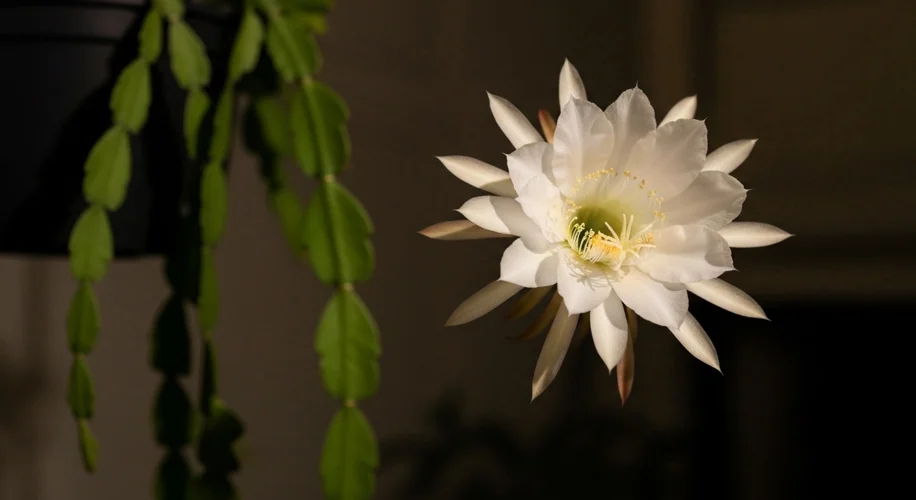Hello fellow plant lovers!
Today, I want to talk about a truly special houseplant, one that offers a fleeting but spectacular reward for its keepers: the Queen of the Night, or Epiphyllum oxypetalum. If you’ve ever heard of a plant that blooms only at night, often just once a year for a few hours, this might be it!
What is the Queen of the Night?
This isn’t your typical desert cactus. The Queen of the Night is an epiphytic cactus, meaning it naturally grows on other plants, often in tropical forests. It has long, flat, leathery leaves that are actually its stems. These stems can grow quite long, making it a beautiful specimen to hang or place where it has room to trail.
But its real magic happens when it decides to bloom. The flowers are large, white, and incredibly fragrant, unfurling their petals after sunset and often closing before dawn. It’s a breathtaking, if brief, display that makes the anticipation all the more rewarding.
Identifying Your Queen of the Night
When you first encounter one, you might not even recognize it as a cactus. Look for:
- Leaf-like stems: Long, flat, and green, often with wavy or scalloped edges.
- Vining or trailing habit: They tend to grow downwards or outwards.
- Buds: The flower buds are often large and hang downwards.
If you’re lucky enough to find one in bloom, you’ll immediately know. The scent is often described as sweet and intoxicating.
Caring for Your Queen of the Night
While they look delicate, these plants are surprisingly resilient. Here’s what they need:
- Light: Bright, indirect light is best. Think of the dappled light you’d find on a forest floor. Direct, harsh sunlight can scorch their leaves.
- Water: Water thoroughly when the top inch or two of soil feels dry. They prefer to dry out slightly between waterings. Avoid overwatering, as this can lead to root rot. Good drainage is crucial.
- Soil: A well-draining potting mix is essential. A cactus or succulent mix, or a regular potting mix amended with perlite or sand, works well.
- Temperature: They prefer average to warm room temperatures. Protect them from cold drafts.
- Humidity: While they can tolerate average household humidity, they appreciate a bit more. Misting occasionally or placing them near a humidifier can be beneficial, especially in dry climates.
- Fertilizer: Feed them with a balanced liquid fertilizer diluted by half, about once a month during the growing season (spring and summer). You can reduce or stop fertilizing in the fall and winter.
- Patience: This is key! Some Queen of the Night plants won’t bloom for several years, and even then, it might only be once a year. Don’t get discouraged; the bloom is worth the wait.
Integrating Unique Plants into Your Home
Adding plants like the Queen of the Night is a fantastic way to bring unique beauty and a touch of the exotic into your home. They become conversation starters and a source of quiet wonder. I find that incorporating these less common plants adds a special layer to my indoor jungle. It’s not just about having greenery; it’s about experiencing the diverse and surprising ways nature expresses itself.
Have you ever grown a Queen of the Night or another night-blooming plant? I’d love to hear about your experiences!
Happy growing!

